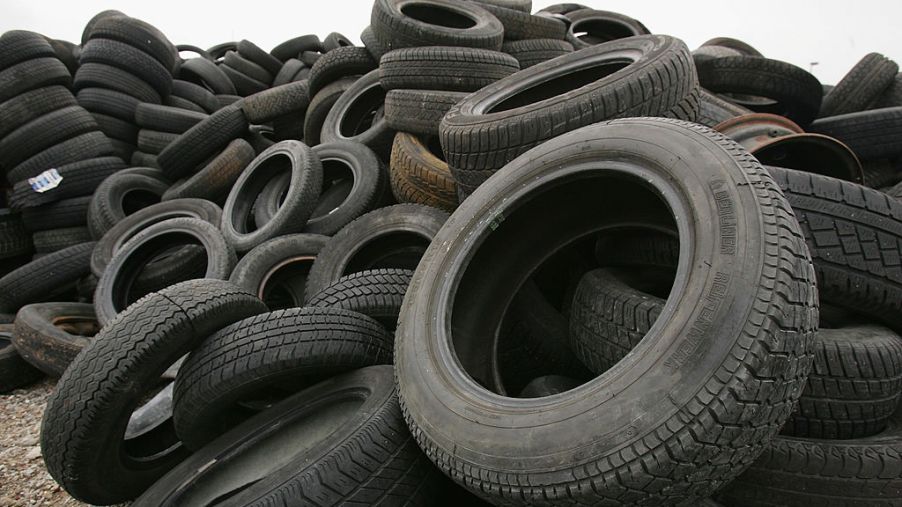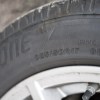
You Can Ignore These Common Myths About Car Tires
Most don’t think about their car tires until they have flat, a mishap, or have to replace them. In truth, your vehicle’s tires are one of its most important components. Ironically, they are also one of the least understood elements of a vehicle.
There are many car tire myths floating around and some of them have some truth to them. Here are seven of the more common tire myths and the truth about each one.
1. You must buy tires in sets of four
This is a myth. Yes, it’s recommended that you replace all four vehicle tires at the same time. But if one tire blows out and the others are still in good condition, it doesn’t make practical sense to replace them as well. Tires can be expensive and sometimes you can’t afford to replace all four at once.
If possible, and two of your tires are still in good condition (3/32″ or more tread depth), it’s a good practice to buy at least two tires to keep you safe.
When you replace two tires, remember the new tires should go in the rear. The back tires provide stability for your vehicle. When your rear tires lose traction due to braking or slowing down, you’ll spin. It’s best to have new tires where you need stability.
2. If you exceed the max pressure your tires will burst
This is a myth, too. The max pressure and max load on your vehicle’s tires tell you ideal tire pressure and the tire’s maximum weight. It doesn’t address tire bursting though.
New tires won’t burst open even when they are over-inflated. It’s not recommended to over-inflate tires because it can cause them to wear unevenly. Over-inflating also doesn’t make for a very smooth ride.
If your tires have more than the recommended pressure, there’s less cushioning when you encounter bumps in the road. Speaking of bumps and potholes, if you hit one of those hard enough with over-inflated tires, it could damage the tire.
3. All vehicles include a spare tire
Another myth. Tire blowouts used to be a lot more common than they are nowadays. There was so much debris in the road that cars by necessity needed one to two spare tires on hand when they traveled.
Tires have advanced quite a bit since then. With run-flat tires available now, you can continue to drive even after they are punctured. There’s also a variety of sealants and tire inflating devices available to help you reach a tire shop or garage.
Due to these factors, many automakers don’t include spare tires in their new vehicle offerings. It’s a good idea to know if you do have a spare tire. If not, consider either using run-flat tires or having a sealant or inflator on hand in your vehicle.
4. If you have tire sensors you don’t need to monitor tire pressure
Another myth. Car sensors are of great convenience. Tire pressure monitoring systems are helpful if you know exactly how many pounds of pressure your tires need for optimal performance.
The system will alert you when the tires are almost too low – like 25% or less of the recommended pressure left. That doesn’t make for safe driving. Always keep a good tire gauge in your vehicle to make sure your tires are properly inflated.
5. Don’t mix tires from different brands
This one is pretty much true. Even if they are the exact same size, it’s not a good idea to mix and match tires from different manufacturers.
Tires aren’t exactly the same across all brands because each has a different process to make their tires. Some make tires that are taller and wider for enhanced performance. Some use less materials for more affordable tires.
The variances between different tires can hurt your vehicle’s performance so stick to the same manufacturer for all four tires.
6. With all-season tires, you don’t need snow tires
A myth. While all-season tires are designed for use in all conditions, they can’t handle winter weather conditions as well as specially designed snow tires. Winter tires offer much better handling and traction in ice and deep snow than all-season tires. They’re designed specifically for cold temperatures and winter road conditions.
7. You only need to rotate your tires once a year
This is a big myth. Your tires should actually be rotated every 5,000 to 8,000 miles and it’s recommended that you get your oil changed at that interval too. You can schedule both services at the same time to save time and money.
Some set their trip meter to zero when they have their tires rotated to help keep up with this. Tire rotation is important because it helps manage the wear on your tires to help you get the most out of them.


